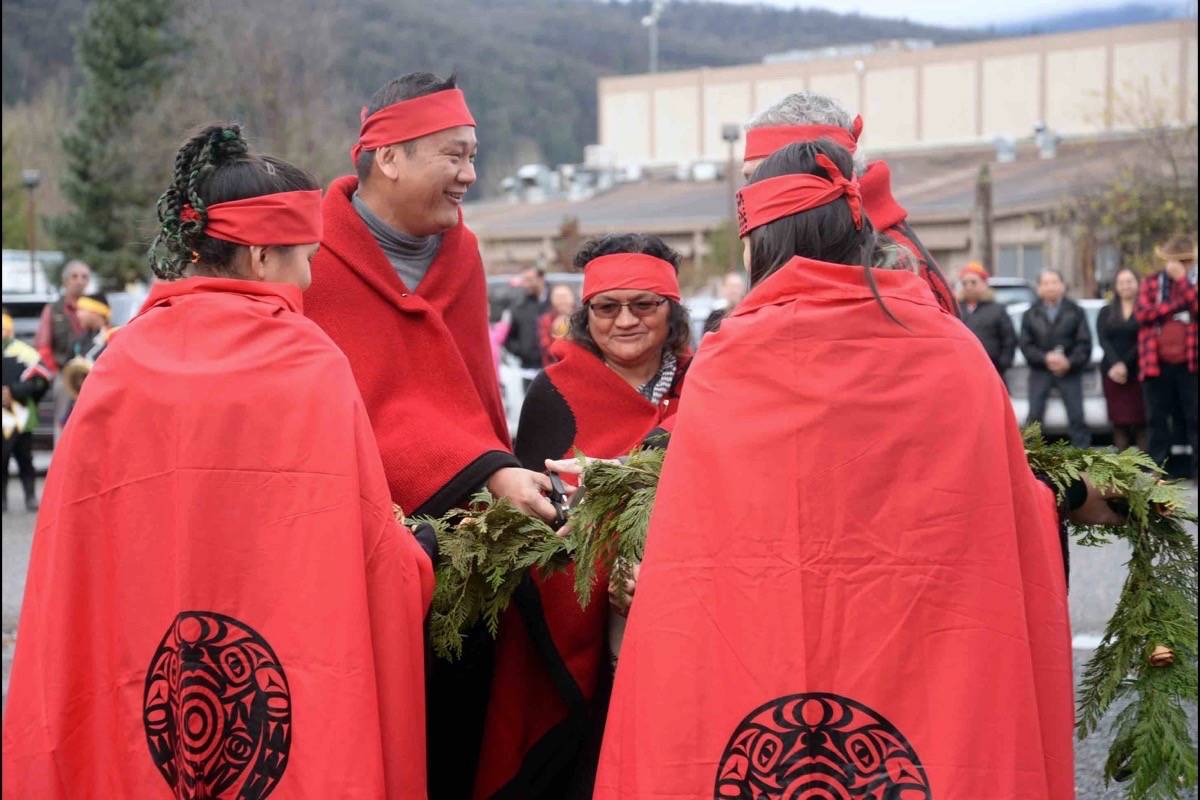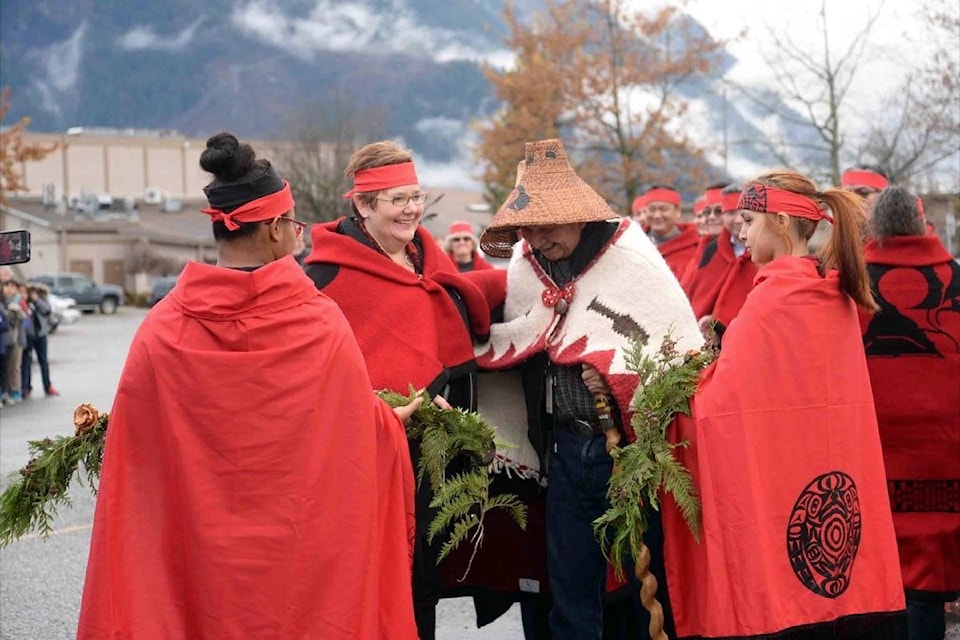Dozens braved a darkening sky for the grand opening of Seabird Island’s new bright and spacious recovery homes at a ceremony Nov. 30.
The A:yelexw Men’s and Women’s Recovery Homes have been in the community for a few years, but the new facilities – a sunny yellow home for women and a mossy green one for men, placed side by side just off Highway 7 near the band office – have enhanced the program and elevated Seabird Island as a leader in the province for providing on-reserve holistic health services.
The first home Seabird renovated is only steps away from the two new structures. The blue, four-unit family home is a place for family healing and growing, while the newer homes are for individuals.
Related: Seabird completes renovation of family home
Each of the new recovery homes can house up to 12 people. Some are from Seabird Island, but the homes accept people from across the Fraser Health region who have struggled with addiction. Residents can stay for up to a year, but are able to continue accessing services at Seabird Island once they leave.
“They’re called recovery homes because they’re really about people recovering what they’ve lost or maybe never had,” said Henri de Boer, executive assistant to the director of health and social development at Seabird Island.
Residents are “recovering their culture, recovering their pride, recovering their family relationships…,” said de Boer in a phone call with the Observer.
With investment from Fraser Health, the First Nations Health Authority and the Ministry of Child and Family Development, de Boer said the homes are a step towards reconciliation and part of a larger initiation to recognize the lasting harm caused by colonization.
“Our councillors would say ‘addiction’ is the wrong word. We should actually be using the word ‘trauma.’” de Boer said. “Because addiction really has to do with trauma, and now we’re actually working on the trauma done by the legacies of colonization.”
At the homes, residents have access to employment support and education at Seabird College, where many work on upgrading. There are available councilors, physicians, pharmacists and other health care workers, most of whom are First Nations.
“It can be very daunting to go be in the hospital, there’s lots of discrimination there, lots of stereotypes,” de Boer said. “It’s far more comfortable for people here. We have two full-time First Nations doctors and most of our health staff are First Nations, so there’s something you can relate when you go for any kind of help.”
Access to cultural supports and events like drum circles, spirit walks and spirit bathing are based on the medicine wheel and a holistic approach to healing, de Boer explained.
Perhaps most importantly, residents are able to heal without going too far from their families, their culture and their homes.
Because it’s the ‘going away’ part of many recovery homes and treatment centres that doesn’t work, de Boer said.
“People had to ‘go away’ to go to residential schools. They don’t want to go away. They want to stay home, they want to stay close to what’s familiar to them and the people they love,” she said.
“We all turn to the people we love when we face difficulties, right? So to be able to do that right here at home is tremendous step forward.”
Related: New B.C. daycare a model for reconciliation
Related: Reconcili-ACTION gives Canadians next steps for reconciliation
nina.grossman@ahobserver.com
Like us on Facebook and follow us on Twitter

